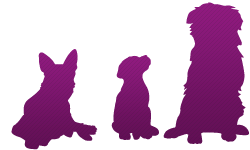From a cell to the genetic print

The buccal swab allows the collection of buccal cells and not just saliva (free of cells).
The cells contain DNA (deoxyribonucleic acid), mainly in the form of chromosomes. DNA carries genetic information, the heredity identity card.
In the laboratory, after registration of your order, the swab will undergo the first operation: DNA extraction found in cells collected on the swab.
DNA is shaped like a double helix, that is to say two strands twisted around each other (it is said to be double-stranded). Each strand is a chain of nucleotides composed of a phosphate (phosphoric acid), a sugar (deoxyribose) and a nitrogenous base. There are four nitrogenous bases: two purines (G for Guanine and A for Adenine) and two pyrimidine bases (C for Cytosine and T for Thymine). In the DNA structure, the bases are complementary two by two. Adenine always pairs with Thymine and Guanine always pairs with Cytosine.

On the chromosome, we identify microsatellite markers, sequences with a repetition of 2 to 6 nucleotides (eg here with two nucleotides: CA).

Dogs have 39 chromosomes pairs, the genetic profile will only relate to 22 micro-satellite markers.




